Life sciences: How far we've come and where we're headed
From pivotal milestones to new horizons, take a look back through the remarkable journey of the life sciences and look ahead to the technologies and research empowering the future
4 Jun 2023
The field of life sciences has witnessed a momentous transformation over the past 25 years, pushing the boundaries of scientific discovery and redefining our understanding of the mechanisms underpinning life itself. From decoding the human genome to pioneering breakthroughs in regenerative medicine, the progress made in life sciences has revolutionized healthcare and opened doors to unimaginable possibilities.
At the dawn of automation, artificial intelligence, and groundbreaking technologies, we reflect on the scientific research that has got us here and look ahead to the possibilities of the future in life sciences. Read on to explore the exciting frontiers that SelectScience® is proud to have covered, as we highlight scientists and technologies that have shaped the fields of 3D cell culture, ‘omics, spatial biology, and gene editing.
3D cell culture: Shaping a new dimension in life sciences
3D cell culture has emerged as a game-changing technique that replicates the complex three-dimensional architecture of tissues and organs more accurately than traditional 2D models. By providing a physiologically relevant environment, 3D cell culture opens up a realm of possibilities for studying cell behavior, disease mechanisms, and drug responses with enhanced precision.
AI-based analysis of 3D organoids – Accelerating translational cancer research

In this video, Dr. Christophe Deben from the University of Antwerp discusses the use of 3D organoid technology in cancer research. Deben highlights how the University's Center for Oncological Research (CORE) utilizes live-cell imaging of organoids to improve detection methods, identify new drug targets, predict therapy responses, and advance personalized medicine. The integration of AI-based image and data analysis software, such as the CORE's Organoid Brightfield Identification-based Therapy Screening (OrBITS) platform, automates analysis processes, enhances insights from live-cell images, and improves reliability and throughput.
Organ-on-a-chip provides preclinical safety toxicologists with the tools to combat drug attrition
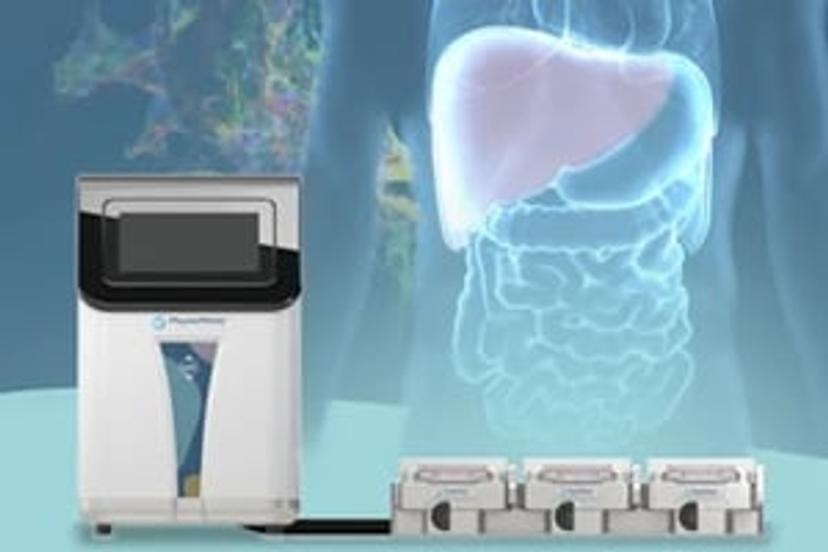
Organ-on-a-chip platforms recreate the functions and physiological conditions of human organs, offering a more accurate and predictive model for drug testing and toxicity studies compared to traditional methods. This article focuses on the role of organ-on-a-chip technology in providing preclinical safety assessment tools for toxicologists. We highlight how these miniature organ models enable researchers to evaluate drug efficacy, assess toxicity, and study disease mechanisms in a controlled environment.
The article explores the potential of organ-on-a-chip technology to revolutionize preclinical drug development by providing faster, more cost-effective, and ethically superior alternatives to animal testing.
Collaboration and CRISPR tools move scientists closer to a cure for sight loss
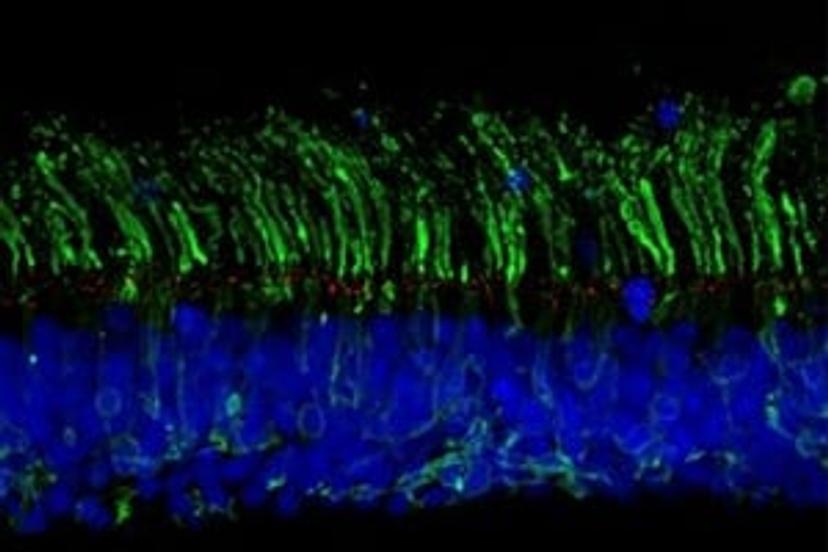
By leveraging CRISPR gene-editing technology to generate isogenic organoids, researchers are making significant progress in understanding the genetic components underlying various vision disorders. This article highlights how organoids are being used to model and study the mechanisms of retinal neurodegeneration. Collaborative efforts are accelerating the development of potential therapies that target specific genetic mutations associated with these conditions. The use of CRISPR tools allows for precise modifications in the genome, offering hope for future gene therapies and treatments that could restore vision.
Harnessing the power of ‘omics technologies
'Omics refers to the study of the entire complement of a distinct category of biomolecule, such as genomics, transcriptomics, proteomics, and metabolomics, and their interactions within an organism. These powerful tools enable researchers to delve deep into the intricate molecular makeup and functions of organisms, offering unprecedented insights into disease mechanisms, drug discovery, and personalized medicine. Explore insights and resources to help advance your ‘omics research.
NGS for high quality and consistent ‘omics results: Your essential guide
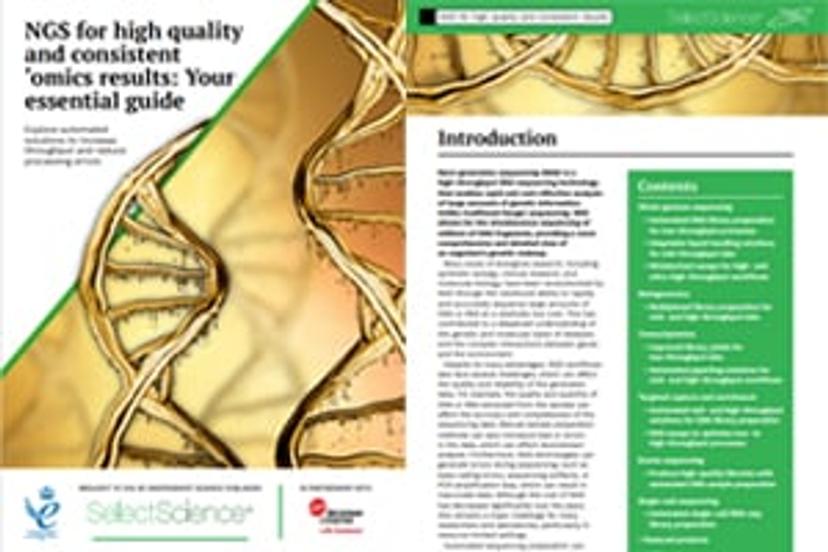
Next-generation sequencing (NGS) is invaluable for 'omics research due to its ability to generate vast amounts of high-quality sequencing data, enabling comprehensive analysis of the entire molecular profile of organisms.
This eBook explores the fundamental principles of NGS technology, its applications in various fields of life sciences, and the key factors to consider for achieving optimal results. It highlights the importance of sample preparation, library construction, sequencing platforms, and data analysis techniques in ensuring high-quality and consistent ‘omics outcomes. Download the eBook for free to learn how to harness the full potential of NGS for your research.
Multi-omics approaches to biofluids and tissues

Multi-omics refers to the integration of multiple 'omics disciplines, such as genomics, transcriptomics, proteomics, and metabolomics, to gain a holistic view of complex biological systems and molecular interactions. In this presentation, Dr. Elizabeth Want, Senior Lecturer, Imperial College London, explores multi-omics approaches to the analysis of biofluids and tissues. Watch to explore the benefits of multi-omics investigations, a discussion into different sample types, considerations including sample extraction and analysis, and case studies of current lab work including brain tumors and diseases of pregnancy.
Spatial biology: Mapping the molecular landscape
Spatial biology has become a prominent approach in life sciences, revolutionizing our understanding of cellular and molecular interactions within biological systems. By integrating advanced imaging techniques, data analysis algorithms, and computational modeling, spatial biology offers a unique lens to visualize and comprehend the spatial organization of cells and molecules. From elucidating tissue architecture and cellular heterogeneity to unraveling complex disease mechanisms, spatial biology provides valuable insights that drive breakthroughs in fields such as cancer research, developmental biology, and neuroscience. Find out more in the below resources.
Bringing spatial biology to the clinic: “A new lens on cancer biology”

In this article, Dr. Arutha Kulasinghe, Senior Research Fellow, The University of Queensland, discusses the emerging field of spatial biology and its potential impact on cancer research and clinical applications. Kulasinghe explores the innovative techniques and technologies that enable the spatial mapping of cellular and molecular interactions within tumor tissues, offering valuable insights into tumor heterogeneity, microenvironment interactions, and drug responses. Plus, he highlights the transformative role of spatial biology in advancing precision medicine approaches for cancer diagnosis, prognosis, and treatment.
The power of spatial biology: A microscopy guide
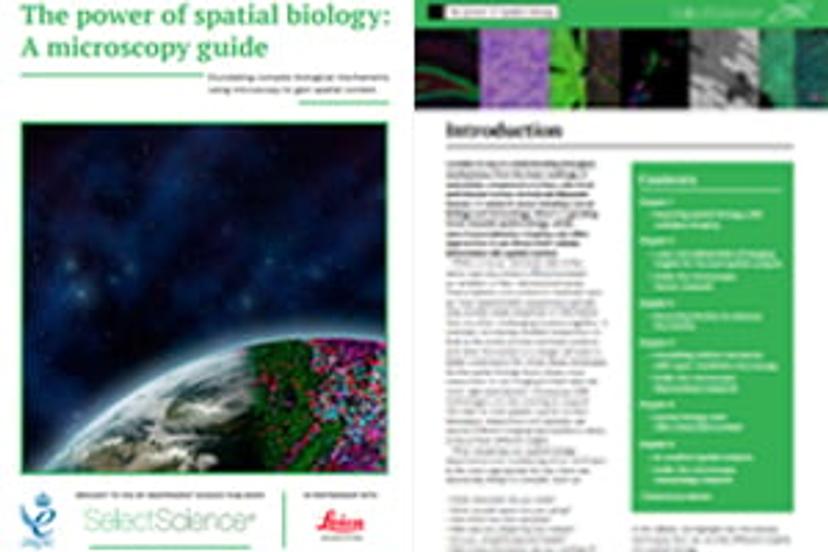
In this SelectScience eBook, we highlight the significance of spatial information in understanding complex biological systems and how it is obtained through advanced imaging technologies. The resource showcases various methodologies, case studies, and workflows utilizing spatial biology approaches for investigating tissue architecture, cellular interactions, and disease mechanisms. Plus, explore the impact that spatial biology has had in fields such as cancer research, neuroscience, and developmental biology.
Download the eBook to learn how to leverage microscopy techniques for your spatial biology applications.
Intracellular architecture: Creating a map to examine how cells are internally organized in space and time

While we know what proteins make up our cells, how these proteins are expressed in time and space and how they interact with other cellular components aren’t fully understood. Learning more about cellular function and make-up can offer insights into what goes wrong in a diseased state.
In this SelectScience article, we speak with Dr. Manuel Leonetti, Group Leader, Quantitative Cell Science at CZ Biohub, whose research focuses on developing an atlas, called OpenCell, that maps the internal architecture of the human cell.
Gene editing: Rewriting the code of life sciences research
With the ability to precisely modify DNA sequences, gene editing tools such as CRISPR-Cas9 have opened doors to unprecedented possibilities in understanding and manipulating the genetic code of organisms. From targeted gene modifications to unraveling disease mechanisms, gene editing holds immense potential for advancements in medicine and biotechnology. See below for some of the ways gene editing is being used to advance science, and how to leverage it for your research needs.
CRISPR-generated CAR T-cells: A new frontier in the treatment of solid tumors
CAR T-cell therapy is a revolutionary treatment for cancer that uses genetically modified immune cells to selectively kill cancerous cells in the body. However, despite this progress, current methods for producing CAR T-cells are complex and resource-intensive, while attempts to utilize these cells against solid tumors have yielded limited success.
In this article, SelectScience speaks with Dr. Krishanu Saha, an associate professor of biomedical engineering at the University of Wisconsin-Madison, to learn how his team is using a nascent CRISPR-Cas9 gene editing method to generate CAR T-cells for the treatment of solid tumors.
Genetically modified mosquitoes … could CRISPR gene editing end malaria?

Despite being a preventable and treatable disease, the public health burden of malaria is huge, and continued efforts in malaria control, elimination strategies, and case management are crucial to minimizing the devastation that malaria has on at-risk communities. Dr. Federica Bernardini is a Research Associate at Imperial College London, working on novel strategies to control the mosquito vector of human malaria. In this article, we speak to her about how Target Malaria are using genetically modified mosquitoes as a means of fighting this devastating disease.
Key considerations in genome editing
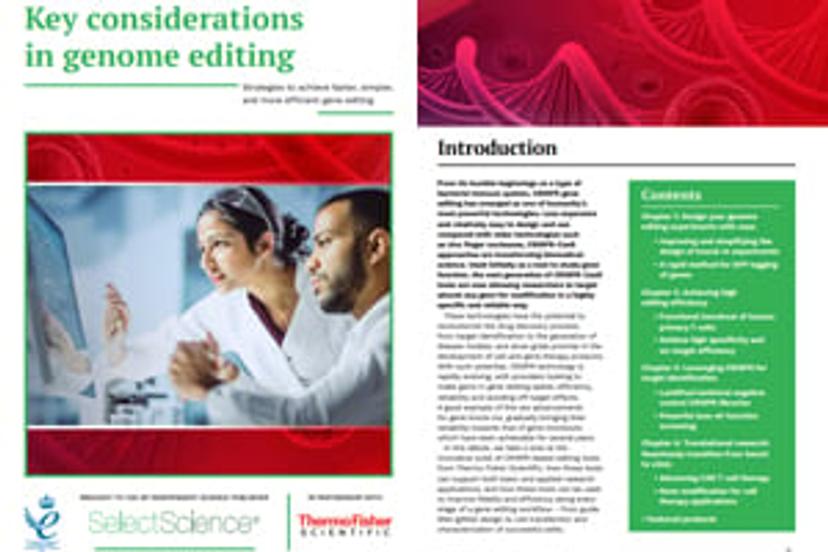
In this eBook, we take a look at the innovative suite of CRISPR-based editing tools from Thermo Fisher Scientific, how those tools can support both basic and applied research applications, and how these tools can be used to improve fidelity and efficiency along every stage of a gene editing workflow – from guide RNA (gRNA) design to cell transfection and characterization of successful edits.
Download the eBook for expert advice including how to design your genome editing experiments with ease, achieve high editing efficiency, leverage CRISPR for target identification, and seamlessly translate your research from bench to clinic.
Like this content? Head to our dedicated community page for the latest news, research, and resources in life sciences>>
